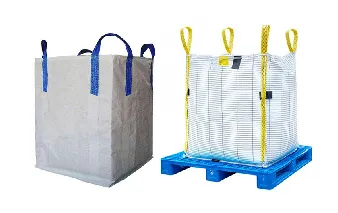Innovative Sewing Machine Designed Specifically for Climbing Ropes and Outdoor Gear Manufacturing
The Essential Role of Climbing Rope Sewing Machines in Outdoor Equipment Manufacturing
In the world of outdoor adventure sports, climbing is one of the most exhilarating yet demanding activities. To ensure safety and durability, climbing gear needs to be meticulously crafted with precision. Among the critical components of climbing gear, climbing ropes must withstand extreme conditions and heavy usage. This is where specialized equipment, like climbing rope sewing machines, plays an indispensable role.
Climbing ropes are primarily made from synthetic fibers like nylon or polyester. These materials provide the necessary strength and elasticity to manage the immense loads and potential impacts climbers may face. However, constructing these ropes is only part of the process. A crucial step in rope manufacturing involves the sewing of various components, such as rope ends, protective sleeves, and other attachments that enhance usability and safety.
The Mechanics Behind Climbing Rope Sewing Machines
Climbing rope sewing machines are designed with features that accommodate the unique requirements of thick and resilient climbing rope materials. Unlike standard sewing machines, these specialized machines possess a robust construction that supports heavier threads and thicker fabrics. They feature high-powered motors and durable needles that can penetrate the toughest fibers without breaking.
One notable aspect of climbing rope sewing machines is their ability to perform multiple stitching types. These include zigzag, straight, bar-tack, and backstitch, which provide additional reinforcement at critical stress points. The precision of the stitching is vital; a well-sewn climbing rope end can be the difference between safety and disaster for a climber. These machines also often come with adjustable speed controls to ensure that each stitch is executed with utmost care and accuracy, reflecting the high standards of quality required in the climbing industry.
Importance of Quality and Safety
climbing rope sewng machine

The manufacturing of climbing ropes involves stringent quality control processes. The sewing machines used for this purpose must comply with industry standards and regulations to ensure the final product can withstand intense force and wear. A rope that fails during use can cause serious injury or even fatalities; hence, manufacturers invest significantly in high-quality sewing machinery that guarantees reliability.
Furthermore, advancements in sewing technology have led to the development of innovative features such as on-screen monitoring and automated threading systems. These improvements not only enhance productivity but also reduce the risk of human error. With these machines, manufacturers can produce climbing ropes with greater consistency and within shorter time frames, meeting the growing demand from climbing enthusiasts and professionals alike.
The Future of Climbing Rope Manufacturing
As outdoor sports gain popularity worldwide, the climbing gear market is poised for continued growth. This demand necessitates ongoing innovation in manufacturing processes, including the use of climbing rope sewing machines. Manufacturers are increasingly exploring automation and robotics, aiming to enhance efficiency and reduce production times while maintaining unparalleled quality.
Furthermore, the integration of sustainable practices in the production of climbing gear is becoming increasingly important. This includes utilizing eco-friendly materials and environmentally conscious methods in both rope manufacturing and sewing processes. As the industry evolves, it will be crucial for sewing machine manufacturers to adapt to these changes, providing equipment that caters to both performance and sustainability.
Conclusion
In the realm of climbing gear, climbing rope sewing machines are more than just tools; they are pivotal in ensuring the safety and performance of climbers worldwide. By marrying advanced technology with rigorous safety standards, these machines facilitate the production of reliable climbing ropes that adventurers depend on. As the future of climbing gear manufacturing unfolds, the importance of these specialized machines will be paramount in meeting the challenges of evolving market demands and setting new benchmarks for safety and quality.
-
Leather Sewing Machine: The Industrial Standard for Tough MaterialsNewsJul.18,2025
-
Sail Making Machine: Heavy-Duty Stitching for Industrial and Marine NeedsNewsJul.18,2025
-
Sling Sewing Machine: The Backbone of Heavy-Duty FabricationNewsJul.18,2025
-
Leather Sewing Machine: Precision for Heavy-Duty StitchingNewsJul.18,2025
-
Big Bag Sewing Machine: Powering the Future of Bulk PackagingNewsJul.18,2025
-
FIBC Sewing Machine: Essential Equipment for Bulk Bag ProductionNewsJul.18,2025
-
Heavy Duty Leather Sewing Machine: A Must-Have for Professional LeatherworkNewsMay.28,2025





























